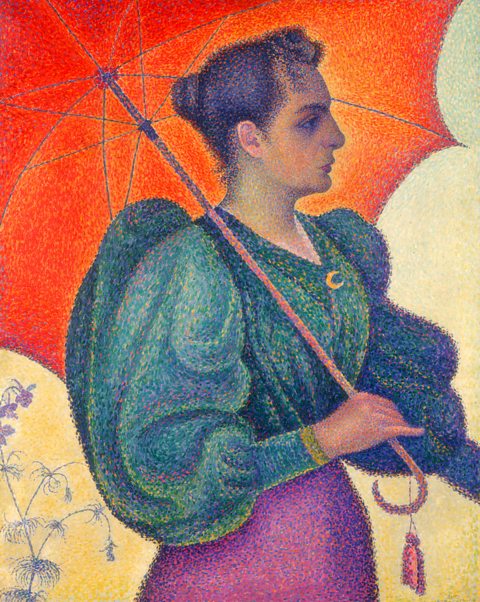Tertiary colours
A tertiary colour is made by mixing equal amounts of a primary colour and a secondary colour together. There are six tertiary colours. On the colour wheel, they sit between the primary and secondary colour they are mixed from.
- Orange and yellow mix to make yellow-orange (this may also be referred to as amber)
- Red and orange mix to make red-orange (this may be referred to as vermillion)
- Purple and red mix to make red-purple (this may also be referred to as magenta)
- Blue and purple mix to make blue-purple (this may also be referred to as violet)
- Green and blue mix to make blue-green (this may also be referred to as turquoise or teal)
- Yellow and green mix to make yellow-green (this may also be referred to as chartreuse or spring green)

Woman with a Parasol, Paul Signac, 1893, oil on canvas, The Print Collector / Alamy Stock Photo
In Woman with Parasol (1893), Paul Signac creates a vibrant image based on tertiary colours.
Instead of mixing different colours of paint Signac applied small dabs of red-orange, blue-green, red-purple (and yellow) to his canvas. From a distance our eyes mix these to see different hues, tints and tones.
Using pure contrasting tertiary colours results in an intense, bright image.

Woman with a Parasol, Paul Signac, 1893, oil on canvas, The Print Collector / Alamy Stock Photo